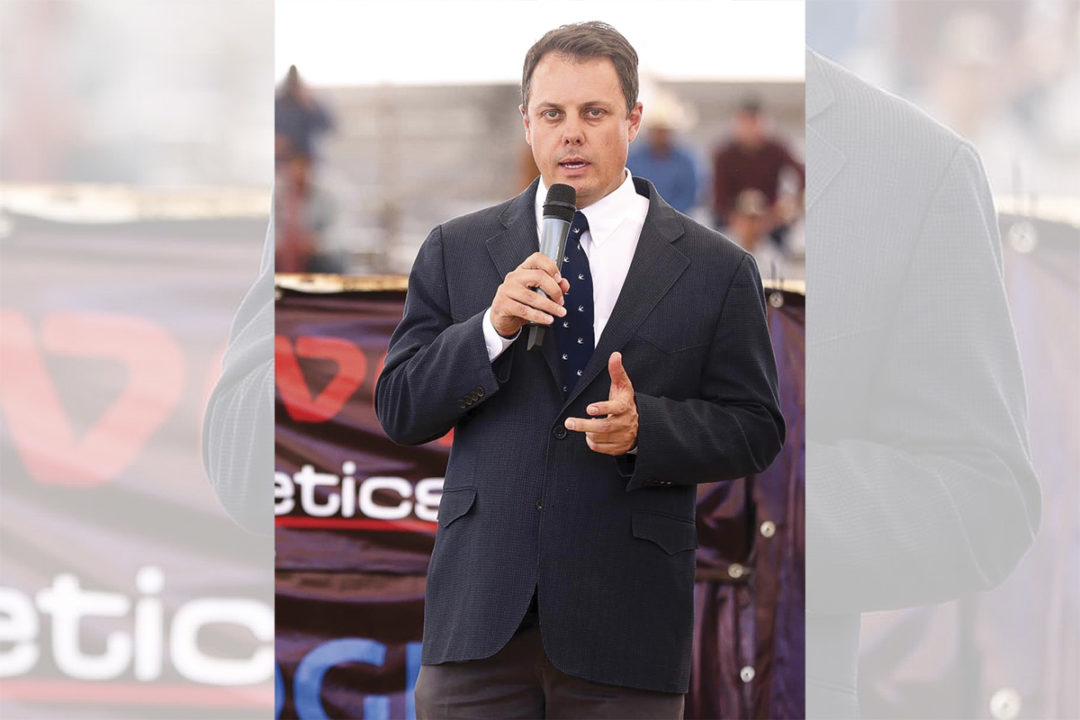PJ Budler was raised on a fifth-generation cattle operation in South Africa. At age 15, he founded BonHaven Beef Cattle and grew the operation to five locations in three southern African countries.
In 2012, Budler relocated to Texas in the U.S., where he is the international business manager for Trans Ova Genetics. This position, together with running the annual “Champion of the World” Competition, judging shows, speaking at events and doing cattle consulting, has taken him to 48 U.S. states and 103 different countries thus far. He has judged 83 different cattle breeds in 42 countries, and in 2017 became the first-ever cattle judge to judge a national show on six continents.
Progressive Dairy Editor Matti McBride spoke with Budler about his experience with the dairy and beef industries.
Describe your involvement with the dairy industry.
BUDLER: My current involvement in the dairy industry revolves around sourcing appropriate dairy genetics for international clients. This is mostly in the form of embryos made by Trans Ova Genetics, but also dairy bull semen for international markets. Throughout my career as a seedstock producer though, I supplied beef bulls to dairy producers, and I've always regarded dairy cattle as a segment of the beef value chain, which they are in almost every country.
Have you discovered a trait that seems to be prevalent across the globe, regardless of breed or climate?
BUDLER: My thesis of there being two sets of traits (profit and turnover) applies as much to dairy cattle as it does to beef cattle or even sport cattle or draught animals. Profit traits are adaptability, functional efficiency, fertility and longevity. Turnover traits are traits such as milk, muscle, growth or marbling. As important as turnover traits are, they are irrelevant if the foundation isn't first laid with the fundamental profit traits.
What is your definition of a successful reproduction program?
BUDLER: Breed type, body type, hormonal balance and maturity pattern are essential. One can either start with this thesis or be forced into it by implementing benchmarks. Profitable animals reach estrous or sexual maturity at a young age, have high inherent body condition, bulls need to be masculine (even in dairy cattle) and females feminine. These types of cattle breed on time, early and every year for a long time. They're also adapted to their management and climatic environment.
Are there any genetic conditions you feel are a threat to the dairy industry?
BUDLER: History has proven that extremes and over-focus on outliers can affect a cattle industry very negatively. Most extremes are antagonistic to fertility, adaptability, functional efficiency and longevity.
In your presentation at the 2023 World Ag Expo, you mentioned that pigmentation should be a consideration in breeding dairy cattle. Can you explain why?
BUDLER: If the climate and environment is 100% controlled and cattle are inside, then pigment is not as big an issue. However, any exposure to infrared rays or ultraviolet rays force pigmentation to be essential. This is especially important on the eyelids and around sexual organs. The stress of light on pink or non-pigmented extremities can be incredibly stressful and irritating to animals, and can lead to cancer on these extremities or photosensitivity if poisonous or toxic plants are consumed. Excess white on cattle is a hazard in these scenarios. Black as a color absorbs light, which makes it ideal for high altitudes and utilizing ultraviolet rays. At low altitudes where infrared is more powerful, black cattle become heat-stressed more easily and will struggle to adapt. This is true in hot desert environments, savannah/prairie environments (where the average annual temperature is over 65°F) and for sure in the tropics and subtropics. Black is suited to more temperate climates and any altitudes over 4,000 feet.
With your beef background, how do you feel about the practice of breeding beef sires to dairy cows?
BUDLER: I believe that if managed correctly, it is an invaluable tool for dairy producers to gain extra income. The beef embryo for use in dairy cows can be a significant margin builder. As long as the correct females are identified for producing replacement females, using beef embryos or beef semen can be more profitable or even significantly more profitable. It is important that these beef genetics are appropriate to transfer or breed to dairy cows and to be raised in a dairy system to the point of going to the stockers/backgrounders and feedlots.
Is there a segment of the beef industry you feel dairy producers could learn from?
BUDLER: I think that both the beef and dairy sectors have progressed enormously and there are such incredible innovations in both of them. The dairy industry might be over-relying on genomic genetic predictions and perhaps ignoring phenotype, pedigrees and animals' actual data a little too much. New Zealand as an industry was quick to balance 25% genomic sires with 75% proven sires. The beef industry certainly has similar extremes but tends to still pay attention to phenotype, actual data and pedigrees. Moderation has also been a trend that has benefited the beef industry as a whole.
Is there a segment of the dairy industry you feel beef producers could learn from?
BUDLER: Yes, there are many. Dairy producers generally have a much better understanding of bovine physiology and endocrinology. Beef producers could learn a lot from their dairy counterparts. Uniformity and consistency is an advantage that the dairy industry possesses. This is a little more difficult for beef producers, as they have to work with the climate and environment a little more. Accurate and regular record-keeping is also a strength that the beef industry could borrow from their dairy counterparts. And finally, genetics. The commercial beef industry in the U.S. is hesitant to adopt advanced reproductive technologies compared with the U.S. dairy industry or even the Australian, Brazilian and Argentinian beef industries.






